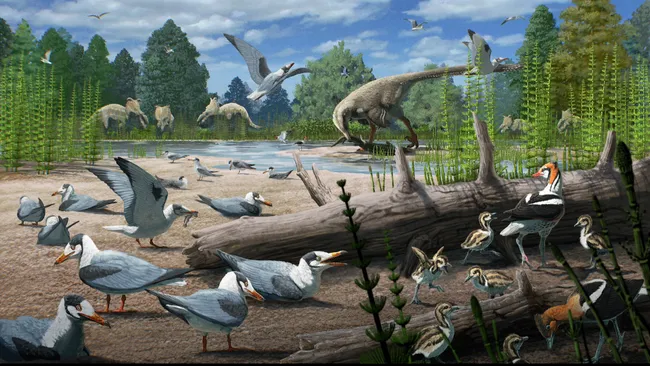A major collection of more than 50 bird fossils found in northern Alaska suggest some ancient ancestors of modern birds learned to either adapt to the harsh Arctic winter, or migrate south during the Mesozoic — the age of dinosaurs.
Ancient Birds Nested in the Arctic 73 Million Years Ago, Fossils Reveal
Birds have been nesting in the harsh Arctic environment far longer than scientists once believed—by at least 25 million years. A new study reveals that avian ancestors were living in the far north during the age of dinosaurs, as early as 73 million years ago.
Researchers uncovered more than 50 fossil specimens—including embryos and hatchlings—in northern Alaska, suggesting that some of the earliest birds either migrated long distances or adapted to survive the Mesozoic Arctic’s long, dark winters.
A Surprising Discovery
“The common conception is that these early birds were too primitive to show such advanced behavior,” said Lauren Wilson, a doctoral student at Princeton University and lead author of the study, in an interview with Live Science.
Wilson explained that these birds, not part of the modern bird lineage, would have had only two options: either endure the brutal Arctic winter as newly hatched chicks or migrate south—up to 2,000 kilometers (1,240 miles). “I don’t think we would expect either of those things from these more primitive birds,” she added.
Whether they stayed put or flew south, the fossils represent the earliest known evidence of either strategy in birds. Today, some species like the ivory gull (Pagophila eburnea) and snowy owl (Bubo scandiacus) nest in the Arctic—but this research shows the behavior dates back millions of years, long before the asteroid impact that wiped out most dinosaurs.
A Deep-Rooted Arctic Legacy
“Many birds nest in the Arctic today, and they are key parts of Arctic ecosystems,” said Steve Brusatte, a paleontologist at the University of Edinburgh who peer-reviewed the study. “These fossils show that birds were already integral parts of high-latitude communities tens of millions of years ago. These aren’t recent behaviors—they’re part of a long evolutionary legacy.”
The fossils represent at least three distinct bird groups:
- Hesperornithes – Extinct, aquatic birds resembling loons
- Ichthyornithes – Extinct seabird-like species with similarities to modern gulls
- Neornithes-like birds – Early relatives or ancestors of today’s ducks and other modern birds
These findings reshape our understanding of early avian ecology and adaptation. Far from being simple, warm-weather creatures, some Mesozoic birds were already braving—and possibly thriving in—the ancient Arctic cold.
